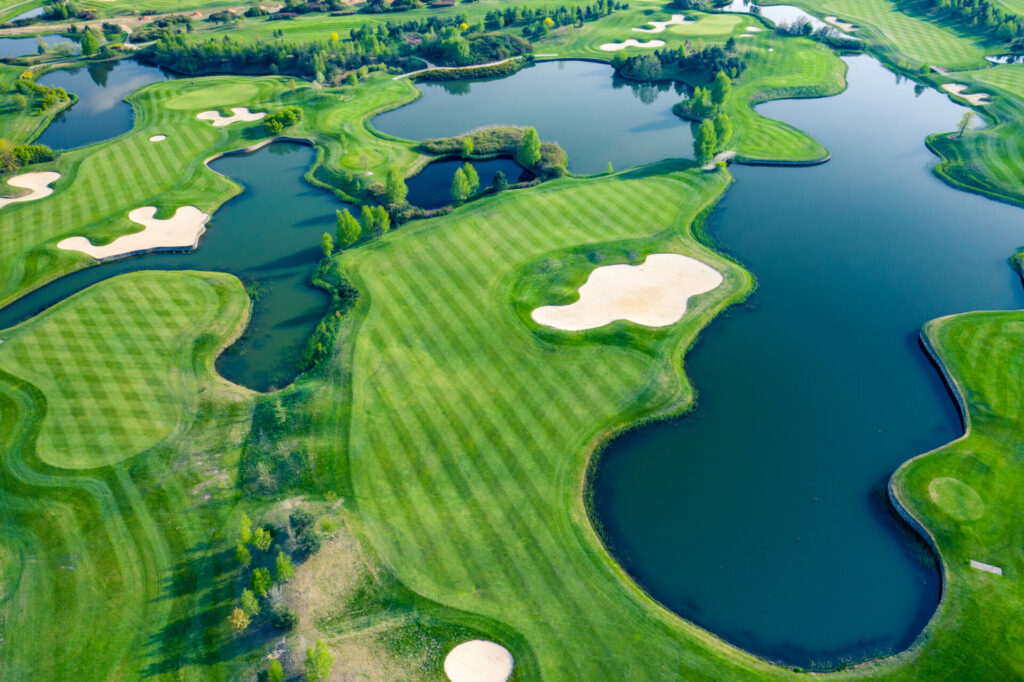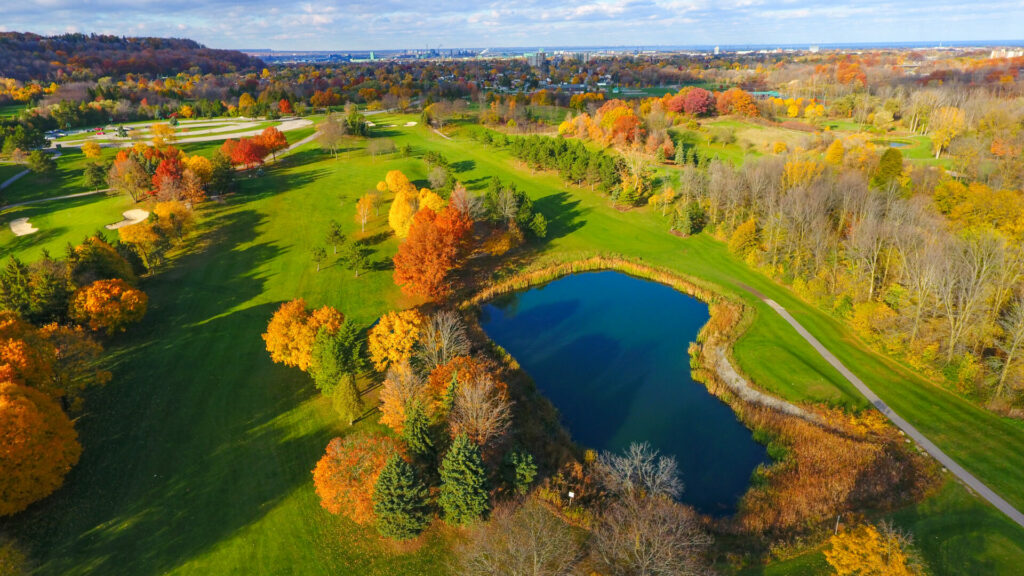Golf courses are growing in number globally but for the most part, they are an environmental menace. They use vast quantities of water, their construction make a desert of wildlife habitats and wholly unrealistic turf management requires tonnes of pesticides.
Yet several award-winning courses around the world are changing all that with new practices including a certification process for ecologically sound courses and the basis of a fast-growing international body – the Environmental Institute for Golf. On others recycled glass is being used instead of sank in bunkers, self-dissolving and fertilising eco-tees are being designed as well as biodegradable golf balls, clever water recycling systems are in use, natural methods are keeping the greens green and golfer education is advancing.
‘I think golf has actually had a largely unfair bad press over the years,’ says Paul Williams, from the Sports Turf Research Institute, an international, independent body that advises Open Championship venues on environmental improvements and which – well ahead of the curve – established the Golf Environment Awards in 1995.

‘But now is a pivotal moment for change given that there’s been something of a golfing boom due to the pandemic. There’s been a lot of good work to make golf more sustainable over recent years and now it’s adapting even further.’
Williams is now at the forefront of a movement to make golf greener. He’s taking on the so-called ‘Augusta Syndrome’ – the expectation that a golf course look verdant all year round, named after the famed US championship course.
Changing Golf’s Eco Image
And not before time. Farming may be far worse, but golf does not have the best of reputations when it comes to environmental stewardship. Those unnaturally green, lush, weed-free courses have long been sustained through the use of vast amounts of water – an estimated 476 billion gallons of it, in the US alone, much of it drawn from the potable water supply – and chemicals, which can leach into the ground, damaging local flora and fauna. Poor water and land management has led to huge energy use too. That golf clubs are often rather elitist places has perhaps only highlighted their tardiness in taking necessary action.
There’s a general acceptance within the industry that dropping the use of chemicals altogether is unlikely in the medium term, not when a million dollar putt might be sent awry by an unwelcome weed.
But change is afoot, not least down to the work of the non-profit Golf Environment Organisation (GEO), which has pioneered an international certification programme operating across 75 countries. It’s something successful clubs can brag about to their ever younger and so increasingly environmentally-aware members and which can be important to the bottom line.
Of course, not all golf courses are as eco-minded as they could be – there’s a general acceptance within the industry that dropping the use of chemicals altogether is unlikely in the medium term, not when a million dollar putt might be sent awry by an unwelcome weed. But chemical use is largely now limited to the greens, which typically amount to less than 10 per cent of a course overall, or have been substituted for more organic alternatives – where high-residue worm killers have been banned, curry powder has been found to be an effective alternative.

Many courses likewise now demonstrate clever use of shade and natural ventilation, even genetic manipulation to create so-called ‘Frankenstein grasses’ that stay greener, grow more slowly and are more tolerant to sunlight. They’re doing more to collect and use rainwater, recycle sewage water and even employ sophisticated weather monitoring systems so they know when a coming spot of rain may do the job for them.
‘The fact is that there’s a necessity for golf clubs to take action due to more regulations, a broad pressure from society at large, their reputation within the community – and golf clubs are often at the heart of a community,’ says Roddy Williams, director of professional golf engagement for GEO. ‘Sure, some of the steps that need to be taken are big ones but there’s an opportunity here for golf to take a leadership position in environmental thinking in sport.’
‘A matter of millimetres may count at golf’s elite level, but really TV coverage of the sport has set the bar too high for the more social player. People playing Sunday League football don’t expect their pitches to look like Wembley’
Douglas Poole, CEO of the UK Golf Federation, argues that thanks to moves towards more eco-mindedness in golf course management, what players actually get to play is a more authentic version of the sport.
‘The efforts being made towards sustainability are really only returning courses to how they were when golf started,’ he argues. ‘A matter of millimetres may count at golf’s elite level, but really TV coverage of the sport has set the bar too high for the more social player. People playing Sunday League football don’t expect their pitches to look like Wembley and the same should be the case with golf courses too.”

With golf courses representing every type of landscape, from marsh to woodland to coastal scrub, and with around 60 per cent of each course left un-manicured, with the right focus they could effectively function as small-scale, unofficial natural reserves providing essential corridors through more urban spaces for migratory species when their other habitats are lost.
Denser grasslands can be cut to encourage certain species of butterflies and wild flowers; the Royal St. George in Kent, is, for example, the only place in the UK where you’ll find the lizard orchid or the bright wave moth.
‘Absolutely golf courses can be an environmental asset to the neighbourhood they’re in,’ says Shelia Finney, senior director at the Golf Course Superintendents’ Association of America’s Environmental Institute for Golf. ‘Golf superintendents are typically in the job because they like the outdoors. Not one of them goes to work saying ‘today I’m going to wreck the environment’. Do some courses have more resources [to be eco-friendly] than others? Of course. But with education that’s changing too.’













